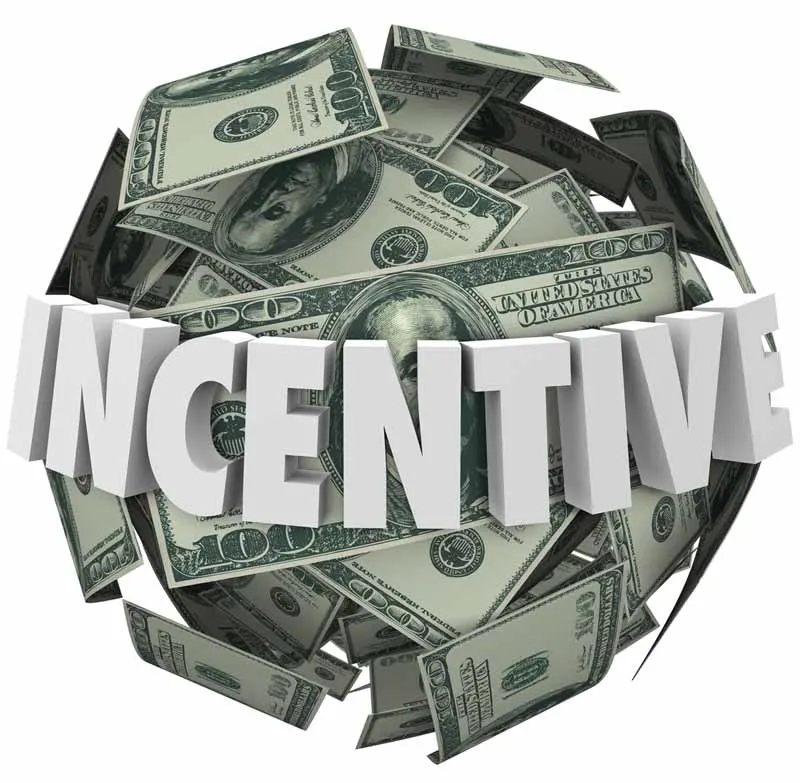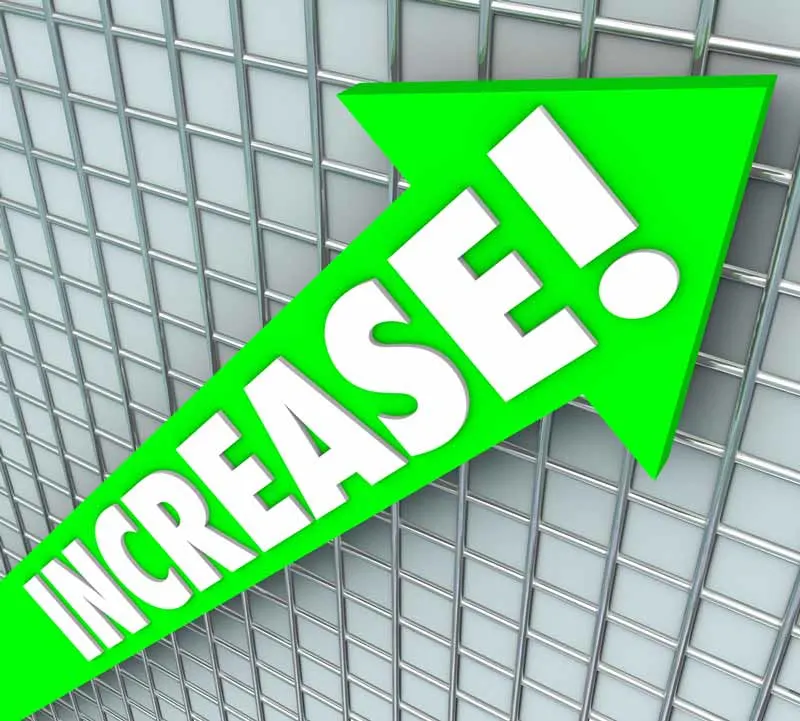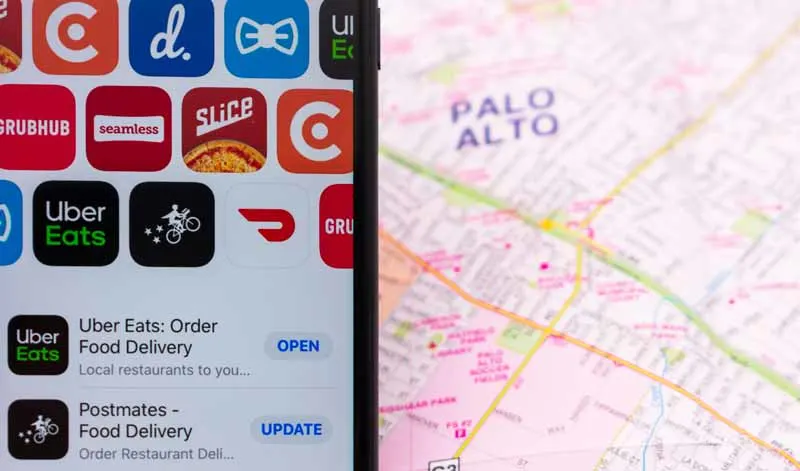One of the beautiful things about posts and podcast episodes is you get to schedule when they go live. That’s what’s happening this week – I’m actually doing this all early in the week because, by the time this does go live my wife and I will be up in the mountains for a year end retreat.
Or we could be stuck in a snow drift. We made our plans and reservations and guess what? The forecast changed. We are looking at some areas getting up to 30 inches of snow. Yikes!

I see all that snow in the forecast and I’m thinking: Should I stay home and make some good money instead?
Snow Day is Pay Day.
Here’s the thing: When the weather gets bad, people don’t want to go out. So, they end up ordering in.
In fact it seems like if there’s just a dusting of snow or a bit of a sprinkle of rain, and my phone is blowing up with delivery offers.
Knowing that bad weather is coming is one thing that has gotten me through the slower summers.
When the weather is nice, people are going out to picnics. They are dining out where you can sit outside. They are grilling. The one thing they aren’t doing as much is ordering food.
But I always remind myself, fall is coming.
Fall means football. People order food to watch football. It also means the weather is changing. That’s a good thing in our industry. It means things won’t be slow much longer.
Higher incentives in bad weather.

Here’s the deal: When there get to be more orders coming in than going out, Grubhub and Doordash and all the others are scrambling to make sure they are getting orders delivered.
I have had $13 per delivery peak pay bonuses in the past with Doordash. I’ve passed on higher for reasons I’ll get into. Orders are stacking up at the restaurants and Uber Eats and Postmates and others are begging for drivers to go.
There are nights I’ve made more than $40 per hour. The incentives and bonuses were that crazy. Folks, that’s the kind of money that makes a lot of people jealous.
It’s the kind of thing that makes it a no brainer, doesn’t it? Bad weather means good money, get out there and drive.
Less wait time in bad weather.
The good news when it gets crazy is that the food is more often than not going to be ready. I’m not waiting for them to fix the food nearly as often.
The other side is, the restaurants tend to have fewer people in the restaurant, so there’s less of an issue of delivery taking less priority.
I’ve known a lot of places that get slammed with delivery orders, and all of a sudden those delivery orders take front and center for them.
There are downsides to bad weather.
I will also tell you that some of my worst times for delivery were in bad weather. It’s almost like there’s a tipping point where it goes from really great to really bad. Here are some things that can start happening with bad weather.
Tips can actually start getting worse instead of better.
One of my first nights delivering was a snow night. I was sure people would be so grateful they’d shower me with tips. I was floored by how many just didn’t tip at all (at the time I was just doing Uber Eats).
That just didn’t make sense, it was almost like tipping was worse.
And it’s frustrating – you walk away from giving the food to someone muttering under your breath because you risked life and limb to get their food to them so they could stay in their warm house, and they don’t bother to tip? What’s wrong with people???
I think there are a couple of factors in why this happens.
The app may be charging more for high demand deliveries.
One of the rare times I decided not to work during a snowstorm, I started thinking about ordering in. Then I saw this on my Uber Eats order screen:

The delivery fees were $14.49 across the board. This was at a time when $2.99 was pretty standard fare. So what happens is, a customer sees the dramatic increase in prices and they assume that the driver is getting all that.
Too often, that’s not the case (at the time of this screenshot Uber Eats was only offering a 1.3 boost and no extra).
A lot of people start ordering delivery who don’t normally order in.
Here’s the thing with delivery. For new customers, there can be quite a sticker shock.
Part of the problem is all the years that pizza and sandwich shops did free delivery. But now there’s a fairly hefty delivery fee and you just assume that’s going to the driver.
On top of that, I would imagine that most people think the driver is getting an hourly wage. You would be surprised how many people don’t even know that we aren’t employees. I think this is true of newbie customers and they believe we are being taken care of.
I think the other part of getting people who don’t normally order in is that there are those who just don’t normally do delivery because they don’t like the tipping culture.
Honestly, I can understand it and at least they are honest about it. I have issues around the whole tipping thing just because it’s not equitable, so I get it.
But now the weather is bad, they’re hungry… they remain true in their resolve not to tip but now they’re hungry enough to still go ahead and order.
Bad experiences with delivery increase dramatically in bad weather.

More people order in. There are always going to be drivers who don’t want to deliver in bad weather. That means a lot of orders are stacking up. People are getting their food delivered late. It can be an hour or more before the food is picked up.
And then, when drivers are delivering multiple orders, the food is in their car longer. The food is cold when it arrives, customers are cranky because they waited so long.
Or they get tired of waiting, cancel, but now can’t get their money back from the app.
And guess who gets blamed? And guess who’s not going to tip up front the next time around?
Bad weather creates efficiency problems.
I get really annoyed with Grubhub in particular when it’s snowing. They seem to almost universally revert to this thing they love, dispatching deliveries 7 miles away.
Do they not realize that 7 miles in snow takes forever? Now obviously, I’m declining the heck out of those orders, but it’s a problem when Grubhub is dispatching in 2 minute increments. You have to wait for the next offer.
You also have to realize that whether it’s heavy rain or snow or ice, you usually are going to be slowed down. It just takes longer. I average about 2.4 deliveries per hour but when there’s a heavy snow, that’s down to about 1.8.
Remember what I said earlier about the customer experience being worse? Well, now you’ve driven to the restaurant, and as you pull into the lot, the customer who is frustrated by being an hour late cancels and you’ve wasted your time.
And then there’s the safety issue
People forget how to drive in bad weather and it becomes a free for all. Lane markers on the roads disappear. People run red lights more often. People lose control.
You may be an excellent driver but the other idiots out there aren’t. And even when you’re an excellent driver, hidden conditions can sneak up on you.
I want to bring this up real quick: I just received a call from a reporter wanting to talk about insurance. She’s writing a story about a girl who got in an accident driving for Grubhub. Her insurance won’t cover her and she’s probably facing filing bankruptcy because she can’t afford to pay the damages.
If you’re using personal insurance you are probably not insured while on delivery. This is a really, really, really stupid time to be delivering. If you didn’t know that about your insurance you better find out.
Thoughts on Handling Bad Weather Deliveries
Here are some of my thoughts on some things to think about when doing bad weather delivery. I’m not sure that this is really advice as much as, this has worked for me.
One: Set Your Price Higher.

Way way way way way higher.
Here’s the deal folks – you’re going out there busting your butt to get food to people at a time when they don’t want to go out themselves. There are a lot of things involved in that.
One, you just plain deserve more for the extra headache. Two, it’s a form of hazard pay because the risk grows exponentially due to some really bad drivers who don’t know how to handle the weather.
What does that mean though? How can you set your price higher when we can’t set delivery fees?
I preach that you set your price by accepting and rejecting deliveries. If a delivery doesn’t meet your price, you say no.
If you listen to me enough, you’ll hear me talk about the 40 cent rule, and this is where the price setting really plays out. A delivery has to pay 40 cents a minute. THAT is my price.
Obviously, you can set whatever price is appropriate for you.
But when the weather is really bad, I’m bumping it up to 60 cents or more. Part of that is because I know deliveries take longer, so the real pay out is maybe closer to 45 or 50.
But the other thing is no way am I taking a freaking pay cut to deliver in this stuff.
Two: Shorten Your Delivery Ranges

This is especially important when the roads are getting bad enough that it’s really slowing you down. Short deliveries will add a little more time, but longer deliveries are even more of a hit.
You want to really make sure the offers you get are at restaurants close to you and it’s better to avoid deliveries that are far from the restaurant.
There is a customer service element in this. None of these companies are real good at recognizing weather conditions when it comes to dispatching, and in my experience Grubhub is really bad at it.
I will tell you in normal situations, you are a far better judge of what deliveries to accept in the best interest of the customer than these companies. Look how many times you get offers to pick up from the same restaurant with long deliveries in opposite directions.
There are times where I think it’s fair to say no, that you’re not going to be the reason the food is cold by the time you arrive.
Three: Adjust your philosophy on using multiple apps.

This might mean being more willing to use multiple applications. This might mean narrowing down to one app. It really depends on you and the situation.
Why you might want to multi-app more
In my personal situation, Grubhub accounts for about 70% of my delivery work.
However, it is very rare for Grubhub to pay more when things get extremely busy. They have sent a lot of texts and such that seem to promise bonuses, but they always word it like we’ll give you “up to” a certain amount extra “on select orders.”
There have been so many times I have received those offers that never paid a penny that they are meaningless.
Where I’m going with that is, Uber Eats and Doordash in particular get really aggressive at times in offering extra pay. When you couple that with the fact that Grubhub often doesn’t seem to understand that the 7 mile-away restaurant is just not an acceptable option, it’s time to start paying a lot more attention to other offers.
Bottom line is, I’m not taking a pay cut for the same orders that now take longer, so I will deliver for someone else who will pay me more.
Why Multi-apping sometimes doesn’t work.
There are times in bad weather that the particular app I’m delivering for just seems to get it. I’m not even done with a delivery and I’ve got a good offer that lines up perfectly.
Sometimes you can just hit a groove and they will keep feeding you and feeding you good offers. During those times I don’t even bother with looking at another app. I want the consistency and flow.
The other thing to keep in mind is that when you have two, three, or four apps going but you’re maybe only on a delivery for one of them at the moment, all the others are just blowing up with offers.
It can get crazy and even a little disorienting to get all the notifications blowing up one after another.
When you add to this that safety issue where you really need full concentration on the road, this may not be the right time to deliver multiple platforms
Four: Know when to say when
There comes a point where you just have to decide, this isn’t that great an idea.
For me, it’s if I’m suddenly having a hard time keeping up with the pace I want to be at as far as earnings.
Is it impossible to make the rate I want because traffic is just that slow? Am I starting to see cars piling up and stuck? Is the snow getting to where my old front wheel Buick might not be making it up the hills, or icy enough that I’m increasingly worried about losing control? Am I concerned about wiping out when walking to the customer’s door?
Anything like that, and it’s time to go home.
That’s not easy. Those $12 peak pay offers on Doordash are a siren song, and I hate sitting at home knowing they’re out there.
But no boost in earnings is worth threatening my earning potential over a longer time period.
Be Smart in the Business Decisions You Make Around Weather.
We’re coming up on the later part of December.
We’ve already had some historically bad weather for the earlier part of winter and we still have January, February and March ahead.
Snowstorms in particular can be a great time to deliver because you can make some good money.
At the same time, when you are doing more, when you are putting yourself at risk, when you are braving bad weather, the last thing you want to do is be giving yourself a pay cut.
Know when the opportunities are awesome, but also know when it doesn’t make sense.
What to do with Bad Weather and Delivery with Grubhub, Doordash, Uber Eats, Instacart, Postmates and others

When does it make sense to deliver in bad weather for Doordash, Grubhub, Uber Eats, Postmates, Instacart and others? When is it a great time to make money and when is it more risk than it's worth?
Instructions
- Set your price higher.
 It takes more time to deliver in bad weather.
It takes more time to deliver in bad weather. - Shorten your delivery range.
 You can't get long distance deliveries done nearly as efficiently in bad weather. Be willing to say no to longer deliveries.
You can't get long distance deliveries done nearly as efficiently in bad weather. Be willing to say no to longer deliveries. - Adjust your thinking around multiple apps.
 . If one app is stupid about how they're dispatching, be ready to switch. At the same time it may be easier to stick with one.
. If one app is stupid about how they're dispatching, be ready to switch. At the same time it may be easier to stick with one. - Know when to say when.
 Understand when it's just not safe to be out. Also be aware of when conditions are getting to where you're not able to make as much, and be ready to call it a day.
Understand when it's just not safe to be out. Also be aware of when conditions are getting to where you're not able to make as much, and be ready to call it a day.



Dan
Wednesday 22nd of January 2020
I have been delivering for a month in the Tampa bay area. Never have I been able to get close to$.40 a minute. Average is $.25 to $.30 a minute. This is in a high density area..order after order..back to back..even with BOTH doordash and ubereats at the same time. I have great ratings, arrive early, well groomed and am very professional. This is even during peak times. The greatest peak pay for St Petersburg has been $2 with $1 being common during dinner rush...Never seen peak on the entire west coast of Florida higher than $4. I think an interesting article would be to see what drivers are actually seeing in their markets $$wise.
I think there is a lot of differences in the individual markets. Can only dream of a $5 peak pay...
ronald.l.walter
Wednesday 22nd of January 2020
Hi Dan, thanks for the comment! You are absolutely right, market makes a huge difference. And yeah, that would be fascinating to see how it breaks down in different markets. Something to think about!
I don't know your market well enough to say this for sure, but one thing makes me think that 40 could be achievable there. You are well ahead of where I was at a month in. I was about 23 cents a minute at the time. It took a long time of just very gradual improvement before I was hitting 40. So if you're between 25 and 30, it's better to focus on hitting 30 consistently, and then once there, how can you get to 32? And even if 35 is the ceiling, it could be that 35 is better for you than 40 is for me, that's the other thing about comparing markets.
I think the most important thing is where are you compared to where you could be and to where you want to be? Honestly, I hesitate at times to mention something like 40 cents a minute - that could be too high for some or too low for others. Mainly what I want to do is encourage people to set the bar higher - not so high that it becomes discouraging but high enough to keep challenging. I'm a geek because I measure every stupid delivery, but it's part of turning it into a game where I want to challenge myself.
Great comment - gave me a lot to think about! Thank you.